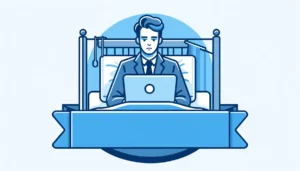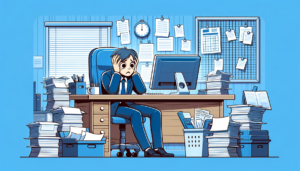How to prevent the 'burnout' phenomenon from entering your workplace
- 4 Min Read
With ‘burnout’ becoming a global issue amongst workers, rather than taking action when it’s too late, employers need to re-adjust their thought process and look at what preventatives measures they can take to stop ‘burnout’ from entering their workplace in the first place.
- Author: Chieu Cao
- Date published: Aug 6, 2019
- Categories

Recently classified by The World Health Organisation as an ‘occupational phenomenon’, it appears the concept of ‘burnout’ is here to stay and even enter the everyday vernacular. In fact, Perkbox’s recent research found that online searches for “what is burnout?” increased by 55% on average from 2018 to 2019. Chieu Cao, Co-founder of Perkbox discusses what steps can be taken to solve this..
Establish support systems for your employees
This should be the first step to preventing the burnout phenomenon from entering any workplace. Regardless of your company size, managers should all receive training on how to support their reports and how to deal with the stress and pressure they themselves may be under. A good example is Marriott International, which offers a wide variety of training to employees worldwide focusing on developing skills, and providing professional and career development training. Topic areas include: work-life balance, leadership, and management.
Another key cause of burnout is employees not taking time off to recharge their batteries. Manager training should also encompass how to spot red flags such as employees staying late in the office, constantly skipping lunch, replying to emails on weekends and being online 24/7, on messaging tools such as Slack. Mental health support should also be made readily available to employees in the form of Employee Assistance Programmes or similar services such as Sanctus, a mental health organisation that brings sanctuary spaces to workplaces.
Analyse your company policies
The next step is to analyse your company policies and reflect on whether you could be doing more to support the work/life balance of your employees.
For example, consider implementing flexible working – a policy that is often a win-win for employer and employee alike. From the employer’s perspective, it helps retain staff and reduce costs in relation to absenteeism, sick leave and burnout. While from the employee’s perspective, it allows them to be more productive by avoiding commuting and the stress linked to it. It can also help with other costs such as childcare, given that flexible working often provides employees with the option to work outside the usual 9-5pm.
At Perkbox for example, other policies such as unlimited holidays have become a truly valued perk by employees. Unlimited holidays not only provide employees with more flexibility but also serves as a way to demonstrate a culture of trust in our organisation, empowering employees to take time off when they feel they need it. Other policies to consider are duvet days – an unscheduled extra day’s leave from work, taken to alleviate stress or pressure and sanctioned by one’s employer.
However, for all these policies to work and actually prevent burnout and not cause it – good management is key. Systems should be in place to flag if some employees have taken no time off at all. For some people, more flexibility may mean more guilt when taking time off, so it’s important that we actively encourage people to use these policies when needed.
Improve your working habits
Making some simple changes to your working habits and those of your employees can also prevent burnout. For example, you can lead by example by improving time management skills and switching off from technology as often as you can at work. With 64% of employees claiming that their personal smartphone usage at work distracts them – turning off your phone from time to time could be a good way to focus on the task at hand and finish off your work as soon as possible.
Similarly, try and understand the importance of taking a lunch break. A study in 2016 showed that most people complete just three hours of productive work on average in an 8-hour workday, which makes a strong argument for carving out the time to take a lunch break. It’s also a chance for employees to get to know each other on a personal level.
Employees want to work in an environment where they feel motivated, but more importantly supported. Taking steps like establishing systems to alleviate stress, analysing your company policies and changing working habits in your organisation will put you on the pathway for less burnout and also, more success.









